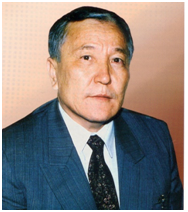 Kazatomprom plans to start producing high-purity silicon and reach a full production cycle of solar panels by 2015.
Kazatomprom plans to start producing high-purity silicon and reach a full production cycle of solar panels by 2015.
Today, Kazakhstan is not only developing renewable energy, but also creating a vertically integrated production process, from quartz raw materials to high-tech products: solar cells. This work has been done in just three years. It actually started in October 2010, when, during a visit to France, President Nursultan Nazarbayev signed an agreement on the KazPV project to develop silicon solar energy in Kazakhstan. I think the fact that Kazakhstan won the bid to host EXPO 2017, the key theme of which is the development of renewable energy, is the best evidence of the recognition of our success in this sphere.
The project’s final product, solar panels, will be assembled at Astana Solar. The base material for them, the solar cells, will be manufactured at the Ust-Kamenogorsk plant.
Producing solar-grade silicon is a high-tech process. The term “high-tech” even emerged out of the microelectronics industry, from silicon technologies. Solar cells and solar panels can be produced from solar silicon, the purity of which is 99.9999 percent.
The metallurgical silicon produced at the Kazsilikon Metallurgical Company has a purity of 98-99 percent; 1-2 percent of different impurities are removed afterward. As of now, the technology for producing silicon metal has been mastered. In March 2012, we launched the stable production of metallurgical silicon (MS) with all the required characteristics.
At the same time, I believe that upgrading our technology should not be too expensive. It must be effective in terms of sales and marketing, and the output value of solar-grade silicon should be $11-12 per kilogramme.
We have already considered several technologies, including the plasma cleaning that is used mostly in France and the oxide slag cleaning used in producing solar silicon in Norway. It should be noted that in that country, there are large deposits of very pure crystal quartz.
Having considered both types of MS cleaning, we concluded that the Norwegian technology is more efficient and promising than chemical, chlorosilan technologies used in the production of silicon in Germany. The cost of building and commissioning a plant to manufacture 1,000 tons is also six times less.
No less important is the fact that this technology is ecologically safe.
According to our estimates, all preparatory work will be completed by October 2014. In 2015, we plan to launch domestic production of solar silicon.
KazPV is a joint project with France. According to the terms of the project contract, France will, in the first 2-3 years, begin to sell our product. But as far as I know, there is already an order for 250 megawatts worth of solar panels from Algeria. And this is after four years of work! I think that mass demand for this product in Kazakhstan is a matter of time, especially as our legislators are taking measures, including tax breaks, to make solar energy a more attractive option for private homes and buildings. There are good examples of how tariffs and state programmes stimulate the development of renewable energy: in the EU, they allotted 3 billion euros (about US$4.1 billion) for the development of solar energy; in the U.S., they allotted $6.3 billion.
The difference is that in these countries, the state budget compensates a significant proportion of the money spent on installing solar units. Moreover, the state buys the energy produced by solar panels at a price 10 times higher than the market price, and also offers tax breaks and subsidies to producers. All this has led to the fact that currently in Germany, solar batteries can be installed anywhere within a few days, and the U.S. programme helped eliminate carbon dioxide emissions equivalent to taking 850,000 cars off the road.
I think this experience will be useful to us because in Kazakhstan, individual construction is encouraged. As for the potential of solar radiation in Kazakhstan, it is significant, at 1,200-1,800 kilowatt-hours per square metre per year. This will make it a profitable source of energy in our country.
Of course, today solar energy is rather expensive, but solar batteries work for 20-25 years. According to the most pessimistic estimates, the panels will fully pay for themselves within 7-8 years. And the economic effect is obvious: for the remaining 13-17 years, the owner of the panels would receive free energy. We should also take into account the continually increasing cost of traditional electricity from the grid, which will make the economic impact even greater.
The entire world, even resource-rich states, is paying attention to solar energy now. First, they were concerned about the depletion of hydrocarbons. But now, despite the opening of new deposits of coal and hydrocarbons, people are realising that the problem is not in their exhaustion, but in their disastrous impact on the environment. This pollution doesn’t respect state boundaries; it is becoming one of the most pressing global problems.
The total amount of solar energy reaching the surface of the Earth each year exceeds by many times the energy potential of the world’s reserves of oil, gas, coal, uranium and other resources, and is 10,000 times greater than modern energy consumption levels. Possessing the knowledge, experience and technologies to harness it, it would be disastrous for humanity not use it.
The author is a professor and an academician of the National Academy of Sciences and has been studying the properties of silicon for more than 40 years. A renowned scientist, he has won the State Prize of the Republic of Kazakhstan and the al-Harezmi International Prize. From 2009-2011, he participated in the development of KazPV project and since 2012 he has been the co-director of the NIIOKR KazPV project.

